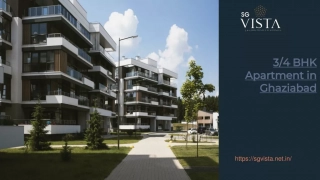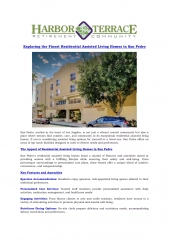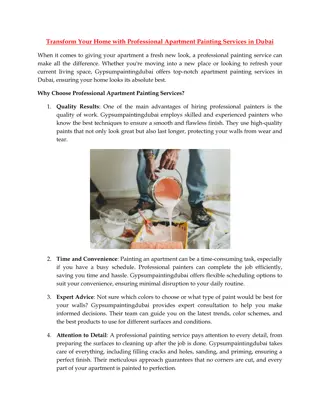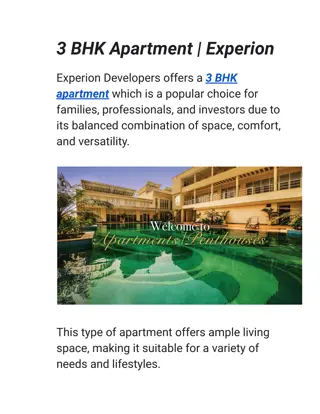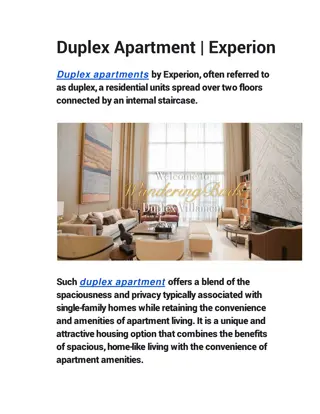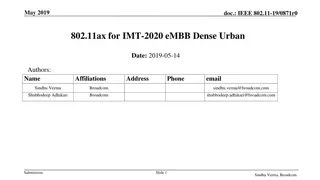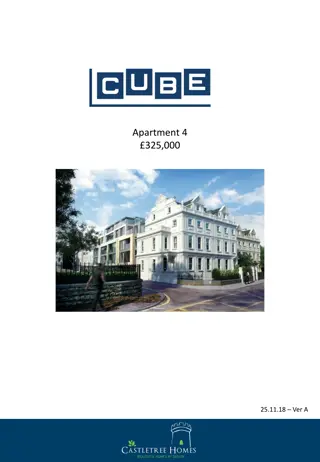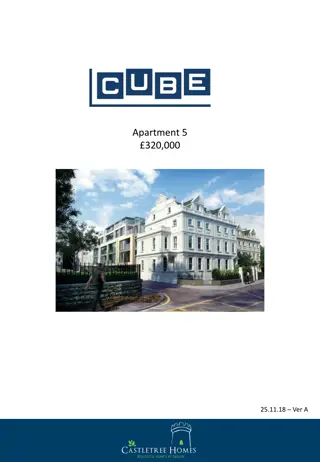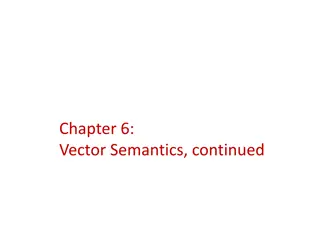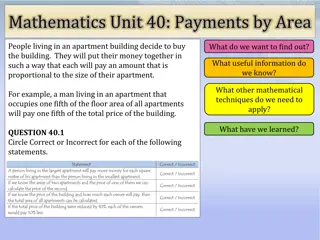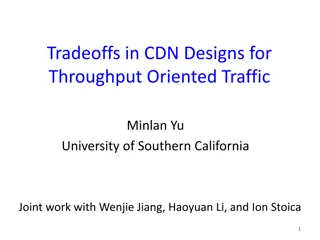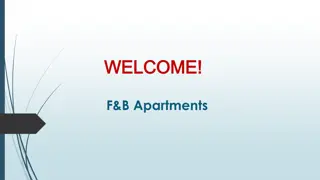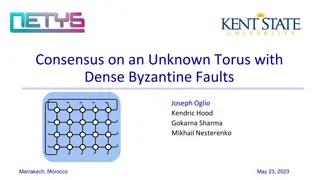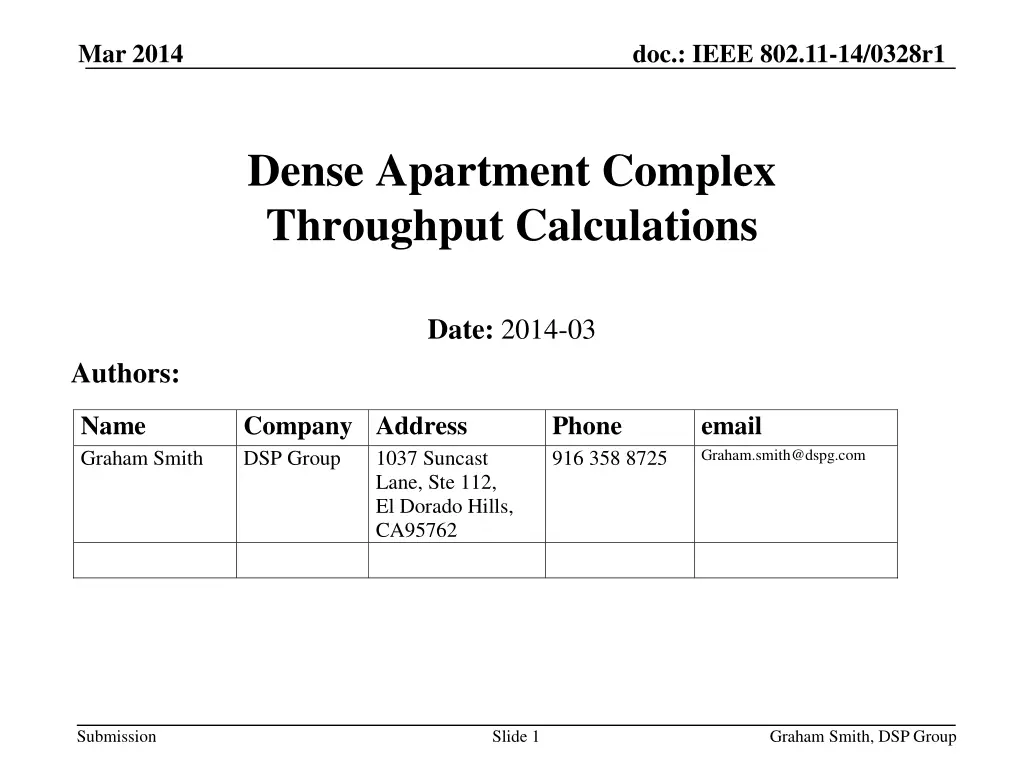
IEEE 802.11 Dense Apartment Complex Throughput Calculations
This presentation delves into the Dense Apartment scenario to calculate throughputs in a Wi-Fi network environment, covering aspects such as potential overlap situations, channel selection schemes, apartment sharing, and traffic simulations. The document explores the challenges posed by strong interference from neighboring networks, multiple operational video displays, and various user activities, providing insights into network deployment and application requirements.
Download Presentation

Please find below an Image/Link to download the presentation.
The content on the website is provided AS IS for your information and personal use only. It may not be sold, licensed, or shared on other websites without obtaining consent from the author. If you encounter any issues during the download, it is possible that the publisher has removed the file from their server.
You are allowed to download the files provided on this website for personal or commercial use, subject to the condition that they are used lawfully. All files are the property of their respective owners.
The content on the website is provided AS IS for your information and personal use only. It may not be sold, licensed, or shared on other websites without obtaining consent from the author.
E N D
Presentation Transcript
Mar 2014 doc.: IEEE 802.11-14/0328r1 Dense Apartment Complex Throughput Calculations Date: 2014-03 Authors: Name Graham Smith Company Address DSP Group Phone 916 358 8725 email Graham.smith@dspg.com 1037 Suncast Lane, Ste 112, El Dorado Hills, CA95762 Submission Slide 1 Graham Smith, DSP Group
Mar 2014 doc.: IEEE 802.11-14/0328r1 Background This presentation looks at the Dense Apartment scenario and calculates the throughputs First we look at the potential overlap situation Then we look at channel selection schemes, random and intelligent. We then determine the resulting apartment sharing We then simulate the traffic per STA for every apartment and present the results Submission Slide 2 Graham Smith, DSP Group
Mar 2014 doc.: IEEE 802.11-14/0328r1 3a Dense apartment building private access and cellular offload Web browsing assumptions for Social Networking are: ~20Mbps, PER 1e-3, delay<50ms 150 active video users and 100 active web browsing users in the building. Traffic Conditions Strong interference from unmanaged overlapping networks (neighboring apartments, and outdoor Wi-Fi network). Multiple video display are operational simultaneously. Interference with Zigbee, Bluetooth. Use Case Users watch the high quality video contents coming from the Internet or video contents stored in their PVR with VHD Display. There may be another video streams to be recorded in the Blu-ray deck. People enjoy playing online games or local game machine with two or more people. Other users are just accessing the Internet for email access, web browsing, etc. Pre-Conditions Each apartment has Wi-Fi network deployed to access internet and cloud services. In each apartment up to 3 users stream concurrently video content from the network and up to 50% of the networks are active. At the same time each of the active Wi-Fi networks is used by 2 users for web browsing Environment Building with 100 apartments. One AP in each apartment of 10mx10m randomly positioned. 5 STA per AP randomly positioned in the apartment. Applications Cloud based applications supporting video streaming with 8k resolution. Video throughput assumptions are: ~112Mbps per STA, delay is < 200ms, 1.0E-3 PER. Online game Cloud-based application as big storage Laurent Cariou (Orange) Graham Smith, DSP Group Submission Slide 3
Mar 2014 doc.: IEEE 802.11-14/0328r1 Dense apartment complex - Legacy Signal Strengths of surrounding apartments -60dBm -80dBm -48dBm -75dBm -89dBm -50dBm -78dBm -98dBm -66dBm -82dBm -71dBm -93dBm HEW Use Case model: 10 x 10 x 3m apartments Walls 12dB, Floors 17dB -81dBm -87dBm Opposite side Same side 20 Apartments per floor 5 floors 13 Apartments within CCA 11 Apartments within CCA 24 Apartments within CCA Submission Slide 4 Graham Smith, DSP Group
Mar 2014 doc.: IEEE 802.11-14/0328r1 Channel Selection (Channel and Overlap) vs Random # Apartments Overlapping Channel Selection Algorithm OVERLAP CHANNELS 0 1 2 3 4 5 6 7 20 19 13 10 9 6 3 100 100 96 68 53 10 1 4 32 44 46 0 3 36 6 8 56 10 12 7 8 # Apartments Overlapping Random selection OVERLAP CHANNELS 0 65 63 43 30 23 8 0 1 22 24 26 28 26 14 0 2 9 9 18 21 24 24 3 3 4 4 8 16 16 20 4 4 0 0 5 5 5 15 10 5 6 7 8 20 19 13 10 9 6 3 6 12 18 7 14 24 27 Submission Slide 5 Graham Smith, DSP Group
Mar 2014 doc.: IEEE 802.11-14/0328r1 2 x 20MHz or Share 40MHz? Does EDCA Overhead cancel out extra subcarriers? Submission Slide 6 Graham Smith, DSP Group
Mar 2014 doc.: IEEE 802.11-14/0328r1 Dense Apartment Complex DSC Signal Strengths of surrounding apartments -60dBm -80dBm -48dBm -75dBm -89dBm HEW Use Case model: 10 x 10 x 3m apartments Walls 12dB, Floors 17dB -50dBm -78dBm -98dBm -66dBm -82dBm -71dBm -93dBm -81dBm 20 Apartments per floor 5 floors -87dBm Opposite side Same side # Apartments Overlapping OVERLAP Using DSC or TPC (with all devices reducing by 20dB) CHANNELS 0 1 20 19 13 10 9 6 3 100 100 100 100 100 100 83 5 Apartments within CCA 1 Apartments within CCA 6 Apartments within CCA 17 Submission Slide 7 Graham Smith, DSP Group
Mar 2014 doc.: IEEE 802.11-14/0328r1 Apartment Sharing # Apartments Channel BW with Channel Selection Channels 20 19 13 10 9 6 3 40MHz 20MHz 100 100 96 32 45 58 1 2 x 20MHz 3 x 20MHz 4 x 20MHz 5 x 20MHz 6 x 20MHz 7x20MHz 8x20MHz 4 68 53 10 0 2 32 0 6 56 10 12 7 8 # Apartments Channel BW with Random Channels selection Channels 20 19 13 10 9 6 3 40MHz 20MHz 65 63 43 35 34 22 0 2 x 20MHz 25 27 32 32 34 42 0 3 x 20MHz 4 x 20MHz 5 x 20MHz 6 x 20MHz 7x20MHz 8x20MHz 9x20MHz 10 10 22 3 3 9 24 4 3 4 10 30 23 8 0 18 14 24 27 Submission Slide 8 Graham Smith, DSP Group
Mar 2014 doc.: IEEE 802.11-14/0328r1 Apartment Sharing - DSC Tables show the number of apartments and the BW. # Apartments Channel BW with Channels selection - DSC # Apartments Channel BW with Random Channels selection - DSC Channels 20 19 13 10 9 6 3 40MHz 20MHz 2 x 20MHz 3 x 20MHz 96 4 96 4 93 4 8 3 10 3 20 6 32 21 Channels 20 19 13 10 9 6 3 40MHz 20MHz 100 100 100 3 89 87 74 35 100 100 100 82 18 8 Submission Slide 9 Graham Smith, DSP Group
Mar 2014 doc.: IEEE 802.11-14/0328r1 Throughput per STA - Sharing 4 STAs per Apartment Average Throughput per STA AC_BE Sharing 40MHz 20MHz 2 x 20MHz 3 x 20MHz 4 x 20MHz 5 x 20MHz 6 x 20MHz 7 x 20MHz 8 x 20MHz 9 x 20MHz TP Mbps 32k agg 48.13 24.84 11.76 7.58 5.59 4.36 3.5 2.80 2.18 1.75 PHY 270 130 130 130 130 130 130 130 130 130 Throughput per STA , Mbps Network 1 Network 2 Sharing 5 x 20MHz 4 x 20MHz 3 x 20MHz 2 X 20MHz 1 x 20MHz 1 x 40MHz STA 1 4.28 5.53 6.19 10.41 22.48 45.93 STA 2 3.42 4.17 9.27 12.08 26.37 46.83 STA 3 4.43 5.50 6.85 11.76 22.83 49.84 STA 4 3.92 2.20 6.47 13.13 27.65 49.93 STA 5 4.98 6.04 5.84 10.38 STA 6 3.56 5.42 5.08 14.27 STA 7 3.91 5.24 8.26 11.23 STA 8 6.02 5.53 9.24 10.79 Sharing 5 x 20MHz 4 x 20MHz 3 x 20MHz 2 X 20MHz Network 3 Network 4 Network 5 STA 9 2.65 6.55 8.70 STA 10 5.85 5.85 10.04 STA 11 3.92 6.14 7.50 STA 12 4.27 6.65 7.58 STA 13 5.36 7.21 STA 14 4.58 5.66 STA 15 5.12 6.06 STA 16 3.30 5.76 STA 17 4.84 STA 18 3.90 STA 19 4.20 STA 20 4.61 Submission Slide 10 Graham Smith, DSP Group
Mar 2014 doc.: IEEE 802.11-14/0328r1 Calculations We take the number of apartments in each sharing category and the throughput per STA for the sharing. 4 STAs per apartment, AC_BE For example: 10 CH Random Channel selection 30 apartments have independent 40MH channel 35 apartments have independent 20MHz channel 32 apartments share a 20MHz channel with another apartment 3 apartments share one 20MHz channel Submission Slide 11 Graham Smith, DSP Group
Mar 2014 doc.: IEEE 802.11-14/0328r1 Results Total Throughput As would be expected, Channel Selection and DSC improve the total throughput Submission Slide 12 Graham Smith, DSP Group
Mar 2014 doc.: IEEE 802.11-14/0328r1 DCF for 10 Channels Submission Slide 13 Graham Smith, DSP Group
Mar 2014 doc.: IEEE 802.11-14/0328r1 DCF for 9 Channels Submission Slide 14 Graham Smith, DSP Group
Mar 2014 doc.: IEEE 802.11-14/0328r1 DCF for 6 Channels Submission Slide 15 Graham Smith, DSP Group
Mar 2014 doc.: IEEE 802.11-14/0328r1 Results CDF (using average TP per STA) Submission Slide 16 Graham Smith, DSP Group
Mar 2014 doc.: IEEE 802.11-14/0328r1 Results CDF (using average TP per STA) Submission Slide 17 Graham Smith, DSP Group
Mar 2014 doc.: IEEE 802.11-14/0328r1 Conclusions When estimating the per STA throughput for the dense apartment complex, it is important to include the channel selection and the resulting apartment sharing scenario. As expected, improvements to the throughput per STA occur with Channel selection rather than random DSC Question is what do we use as the basis? Channel selection is recommended in 11aa. Submission Slide 18 Graham Smith, DSP Group

